Top Vacation Spots in Asia
No doubt about it, Australians love Asia. Over the last decade, the number of Aussies travelling overseas has increased steadily with the Indonesian island of Bali, the most popular destination. Japan has seen the biggest rise in popularity since the beginning of the millennium, while the entire region of Southeast Asia remains perennially popular.
Australians have a special case of wanderlust, yet what makes us choose holidays in Asia over other destinations? For some, it’s the chance to try new food. Put an exotic dish in front of an Aussie and chances are, he or she will jump at the opportunity to eat it. For others, it’s the chance to visit different cultures or basking on sandy white beaches after a relatively short fight that won’t result in jet lag.
Choosing Your Holiday Destination in Asia
Asia often feels like seven continents in one because of its diverse experiences. No two Asian spots are ever alike. Immerse yourself in the culture of Japan on one trip and then on the next, take a luxurious, relaxing break in the romantic Maldives. Even if you only have a few days for an Asian holiday, you can easily take a break in Hong Kong, Singapore or another city destination and revel in the hectic life of an Asian metropolis. Asia can mean different things to different people. The best Asia holidays are not necessarily the ones that are the most popular but are the ones that speak to you. The experiences you can have in Asia are numerous as its wonderful destinations. Take a look at what you can experience.
Best Countries to Visit in Asia
Top destinations in Asia appeal to diverse groups of people. Baby boomers are one of the fastest-growing segments of travellers as they have the time and disposable income to travel frequently. The best places have experiences that you will find nowhere else on holiday.
Vietnam: A Perennially Popular Vacation Spot
Simply put, Vietnam has it all. You won’t find a more beautiful country in the world. It is home to stunning national parks, huge caves, rainforests, natural rock formations, rivers, waterfalls and untouched beaches. History is one of the main draws. The country is filled with leading educational sites that document French colonialism or the Vietnam War. Culture abounds in the ethnic villages that often open local business and homes to travellers. The Vietnamese are some the friendliest people around here, always willing to give directions or answer questions. It’s inexpensive too. Your travel dollar will go further here than in most other countries. With so much to see and do, it’s no wonder that Vietnam is the top destination in Asia.
Vietnamese Food is in a Class By Itself

People enjoy Hanoi street food
Vietnamese cuisine is popular all over the world, so experiencing its wonderful flavours at their source is a must. Where do you find the best food? Why on the street, of course. Vietnamese street food is simply amazing. Go to any vendor, find a stool and treat yourself to a gourmet meal. What makes Vietnamese food amazing is hard to pinpoint, but the cuisine has influences from China and France. At any hour of the day, you’ll find people enjoying a bowl of the iconic pho, meat broth with noodles or bun ca, a fish- and pork-based soup. Don’t forget to try bun cha, char-grilled pork served over noodles and dipping sauces or the classic sandwich, banh mi. The list of tasty foods is endless, spring rolls, fried jackfruit, cau lau noodles and giant seafood pancakes are nothing short of amazing.
Vietnam knows a few things about coffee, as it is the world’s second-largest producer. Drinking coffee is a way of life here as it is served in cafes, on the streets and almost always with sweetened, condensed milk. The Vietnamese are also passionate about beer, and you’ll find a proliferation of local brews to try all over the country.
When to Travel
Weather patterns vary greatly in Vietnam from north to south, so make sure you are prepared. The best time to visit the north is from March to May and September to November to avoid summer heat and humidity and drenching rains in the winter. The countryside is in bloom, while the rice fields near Sapa are a photographer’s dream. The central region from the highlands to DaNang experiences a coastal climate. Travel anytime from January to August. In the south, you’ll encounter warm temperatures throughout the year, although December through April are slightly cooler.
Where to Travel in Vietnam
Vietnam is a country that quickly becomes additive for travellers because of the breadth of experiences. The country may look small, but don’t let that fool you as its coastline is 3,260 kilometres long. Start in the north and wend your way south.
Hanoi

Hanoi is ideal for first-time travellers. The capital offers plenty of experiences for history, culture, shopping, and street food. You’ll enjoy plenty of colonial architecture along with museums. Visit the Old Quarter and stroll through Dong Xuan, the city’s biggest market or learn about Ho Chi Minh. Lakes, parks, boulevards and more than 600 splendid temples and pagodas add to Hanoi’s appeal. Top spots include:
• Temple of Literature
• Hoa Lo Prison
• Citadel of Thang Long
• Water Puppet Theatre
• Ho Chi Minh Mausoleum
• Perfume Pagoda
• Koan Kiem Lake
• B VI National Park
• Hanoi Opera House
• Thang Long Citadel
• One Pillar Pagoda
Ha Long Bay

Ha Long Bay Sunset on islands
Take a boat cruise through the bay to experience its crystal waters and gorgeous limestone islands topped with lush vegetation. It’s a great place to explore craggy bluffs and pretty inlets. Many of the 2,000 islands of this UNESCO World Heritage site are home to caves where you can go spelunking or simply enjoy seafood barbecues, sea kayaking and other water attractions.
Central Vietnam
This area is Vietnam’s most diverse region as it has a mix of urban centers, beaches and incredible scenery that include rugged rivers and jungle wilderness. Sample fresh seafood or try local dishes such as cao lau noodles. For those interest in war history, visit the Khe Sanh American military base or the Vin Moc tunnels.
Hoi An
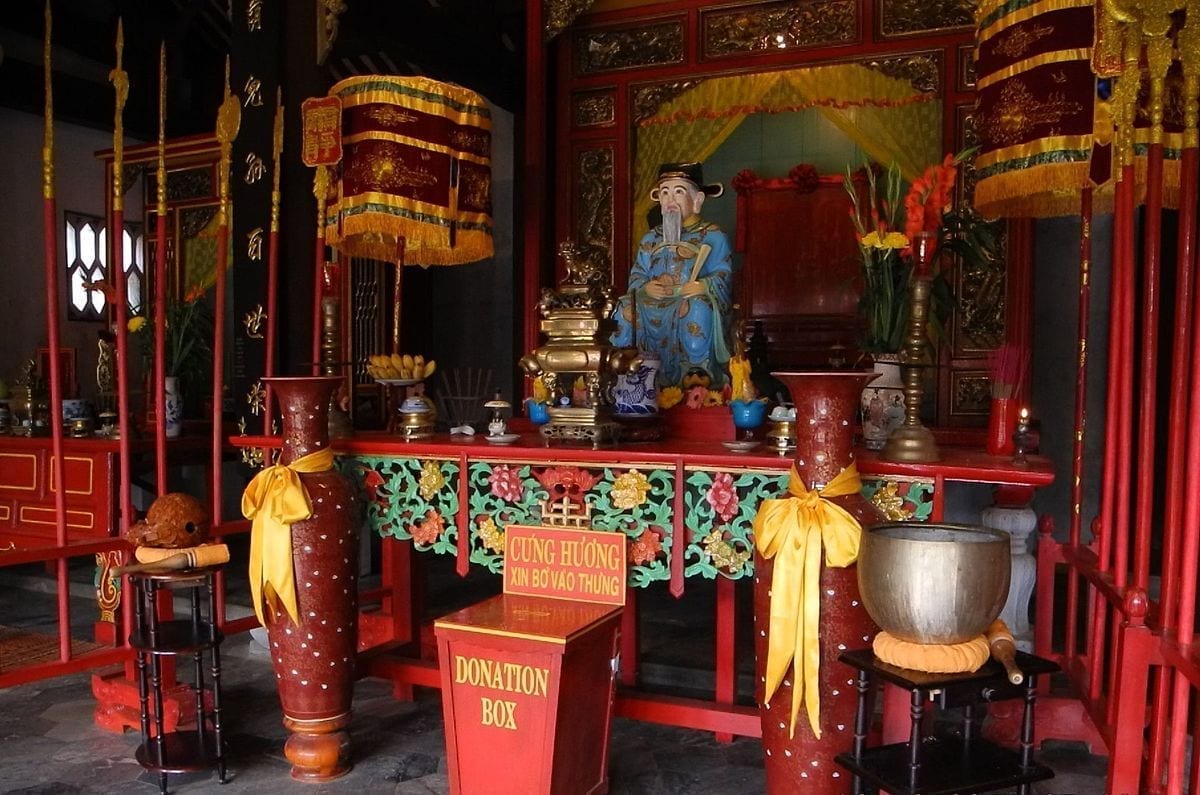
Quan Cong temple – Hoi An
This central coast town is both charming as well as a prime travel destination. It’s a well-preserved example of what a trading port looked like from the 15th through 19th centuries. The historic centre is covered in charm. Silk lanterns are everywhere. Locals expect you to stroll through the streets and look for kitschy souvenirs, have a coffee or join a scenic boat tour. Be sure to visit the Covered Bridge and the Quan Cong Temple.
Phong Nha-Ke Bang National Park
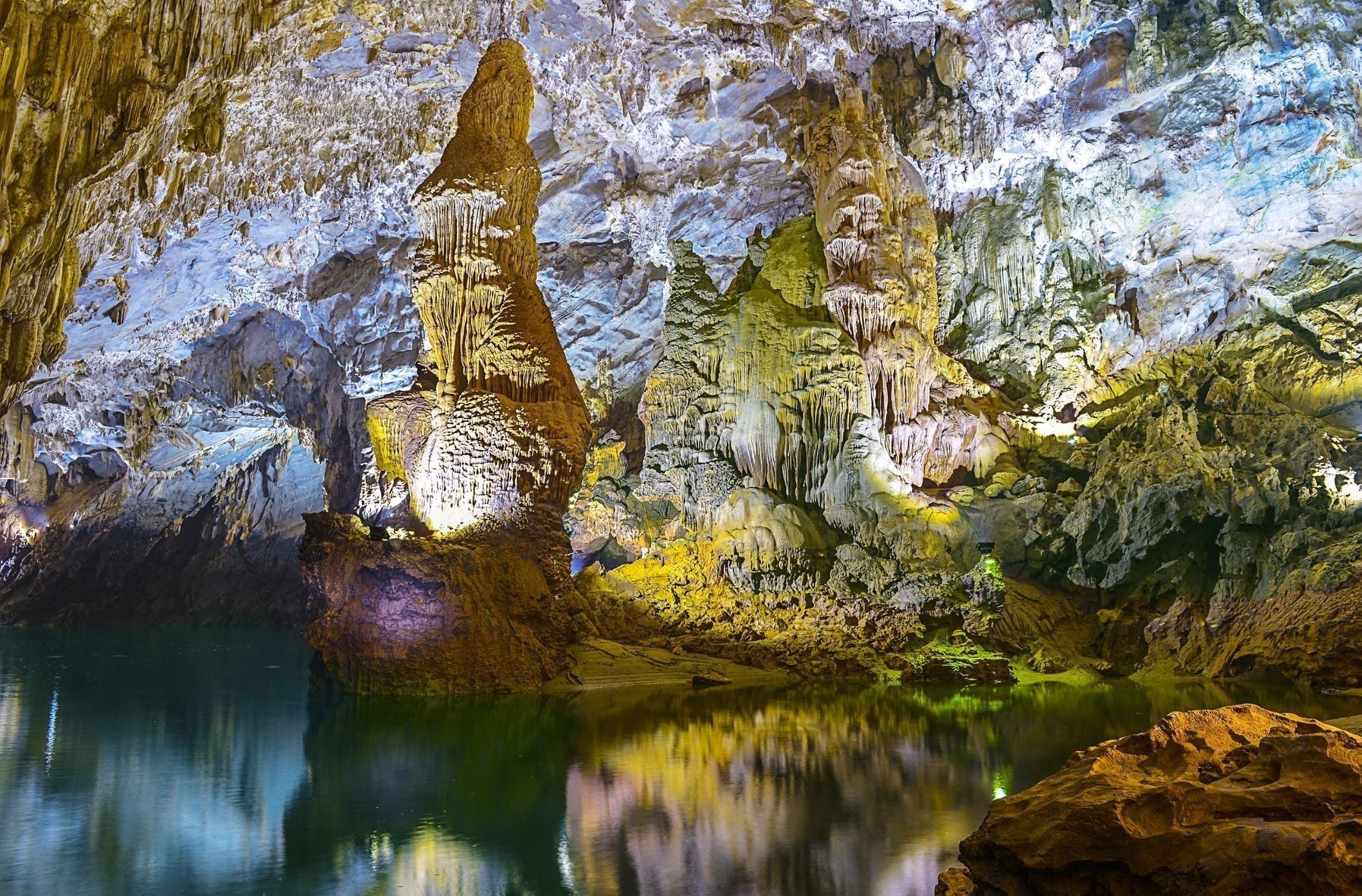
Phong Nha-Ke Bang – national park and UNESCO World Heritage Site
This destination is one of the bet places for outdoor types. Featuring karst mountains that are among the oldest in Asia, along with underground rivers, historic sites, extensive caves and unspoilt jungles, this area has plentiful opportunities for outdoor fun in one of Vietnam’s most spectacular regions. It’s an essential stop for intrepid travellers.
Ho Chi Minh City

Ben Thanh Market – Ho Chi Minh City
Vietnam’s economic centre, Ho Chi Minh City, formerly known as Saigon, boasts charming French colonial architecture and wide boulevards often choked with traffic. Beautiful pagodas and temples rub elbows with glamourous skyscrapers. This city, rich in culture and cuisine, is also one of the most budget-friendly places to visit in Asia. Visit the frenetic Ben Thanh Market for food, flowers and frogs or use the city as a starting point to visit the flora and fauna in the Mekong Delta, just to the south. Attractions you won’t want to miss, include:
• The War Museum
• Giac Lam Pagoda
• Reunification Palace
• Jade Emperor Pagoda
• Fine Arts Museum
• History Museum
Exploring Cultural Destinations in Japan
Visiting Japan is like stepping into another world. Developed over thousands of years and continually evolving today, Japanese culture is steeped in history and quite different from other Asian cultures. Geishas, samurais, tea ceremonies and Zen gardens sit alongside pop culture, manga, anime and electronics districts in the big cities. Filled with natural beauty, Japan becomes a leading travel destination in Asia for travellers who want to experience something outside the norm.
The Gastronomical Delights of Japanese Food
Japanese cuisine has an abundance of dishes along with regional specialties and seasonal recipes. Restaurants range from mobile food stands to centuries-old ryotei, seasonal terraces, chain stores, and unique themed restaurants. Sushi and sashimi are the foods most commonly associated with Japan and are known all over the world. Miso soup is a common side dish in many meals and often contains ramen or tofu. Other well-known dishes are tempura, udon and yakitori. Tonkatsu, a bread, deep-fried pork cutlet, and okonomiyaki, a savoury pancake-like dish usually filled with seafood, are lesser-known popular dishes.
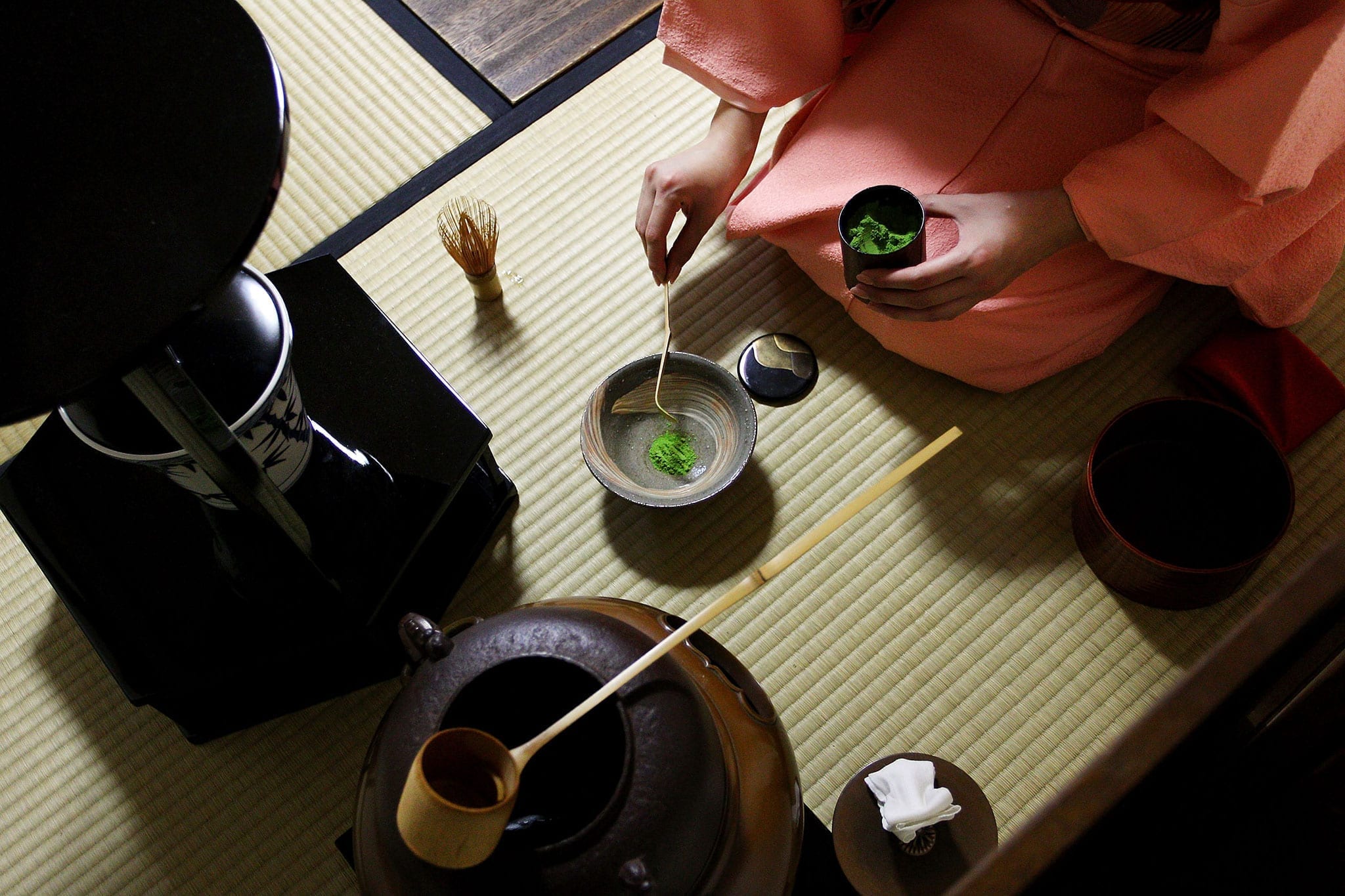
Japanese tea ceremony
Consumption of tea is an integral part of Japanese food culture. Green tea is the type most commonly served and is the central element of the Japanese tea ceremony, which every traveller should experience. Beer is the most popular alcoholic drink. Sake, commonly called nihonshu in Japan, is rice wine consumed either hot or cold.
When to Visit Japan
The best time to visit Japan depends on what you want to do as the country has endless festivals and activities. For culture buffs, the prime time is during cherry blossom season in March and April and sometimes into May, depending on weather conditions. You’ll also find temperate weather in May and from September through November, with the latter a good time to see fall colours. During these months, rainfall is minimal and skies are clear. Summer is typically warm and humid, with rainy season June through mid-July. Note that in 2020, crowds and prices will skyrocket, especially in Kyoto, because of the summer Olympics. If you want to save money, look for bargains during the winter, particularly from mid-January through March.
Where to Travel in Japan
Visiting all of Japan’s cultural attractions can take months. You’ll find most of them in cities, which are good places to start if you are visiting the country for the first time. Taking bullet trains between the major destinations is another cultural experience you won’t find anywhere else.
Kyoto
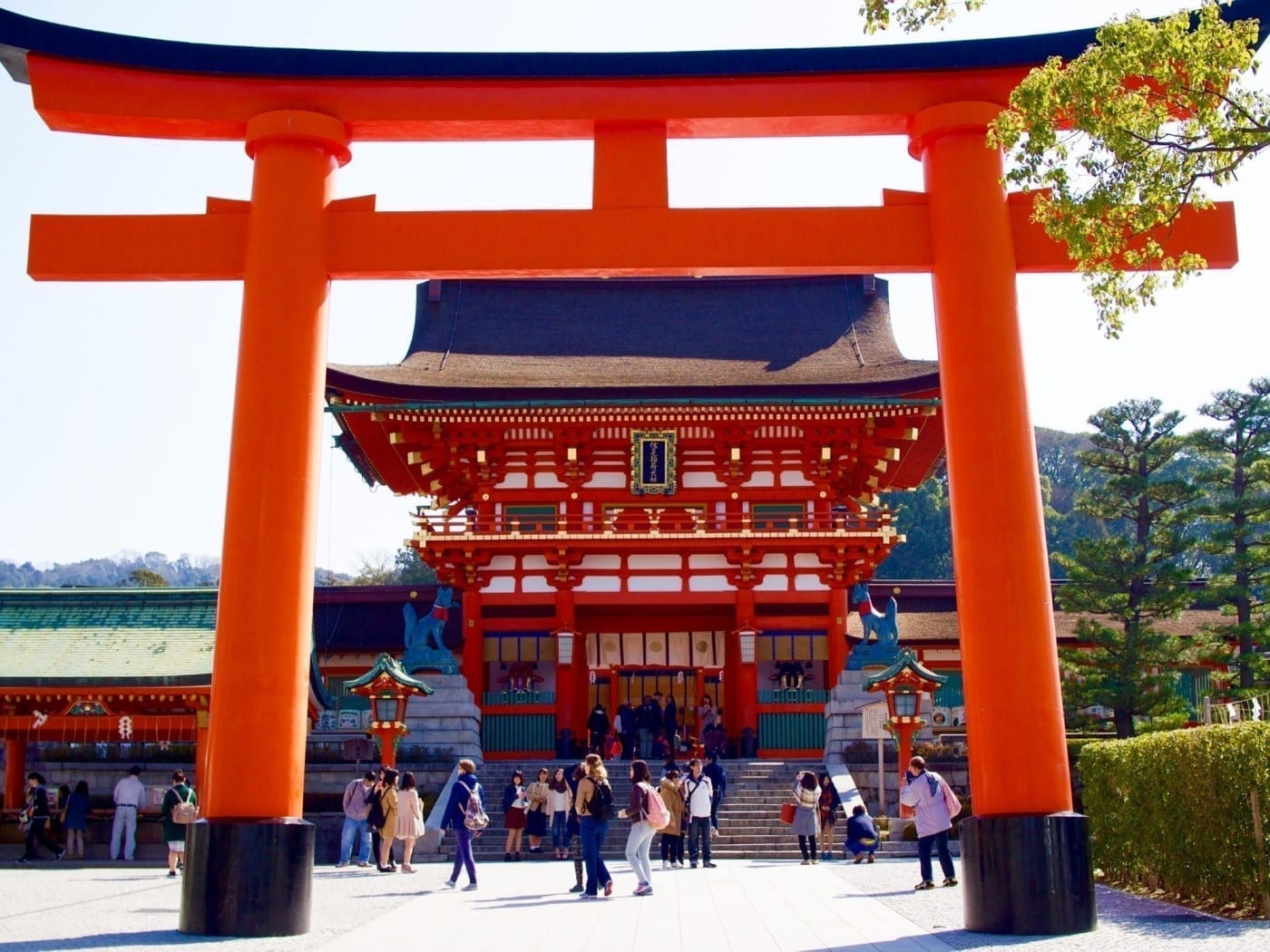
Fushimi Inari Taisha – Kyoto
Although Japan’s commercial centre is Tokyo, its cultural heritage is in Kyoto. Often referred to as the most beautiful city in Asia, Kyoto is set amongst a mountainous backdrop and is home to more than 4,000 historical structures, shrines and museums. Many temple structures also have extensive gardens that include the country’s famous cherry trees. These shrines and temples offer a link between modern city life and the ancient past. Shimogamo Shrine dates to the 6th century, while Fushimi Inari Shrine, famous for its orange tori gates, houses the life-sized Thousand Armed Kannon statues of Sanjūsangen-dō. The Golden Pavilion, perhaps the city’s most renowned symbol, is a 14th-century Zen Buddhist temple with 132,000 square meters of gardens, ponds and stones. Visit the traditional district of Gion to find geishas strolling across bridges. Take in a geisha performance and enjoy a multi-course kaiseki meal. Other highlights include:
• Sagano Bamboo Forest
• Kinkaku-Ji
• Kyoto Imperial Palace
• Nijo Castle
• Kiyomizu-Dera Temple
• Nanzen-Ji Waterfall
• Ryoanji Temple
Tokyo

Sensoji Temple gate – Tokyo
A cultural experience like no other awaits you in Tokyo where tradition and pop culture collide. Among the best travel experiences in Japan’s magnificent capital has something for everyone that includes walking beneath the cherry blossoms beginning in late March, attending an authentic sumo wrestling match, experiencing the famous Shibuya crosswalk or singing at a karaoke bar. The city is home to beautiful temples, cultural centres, lots of museums, emerald gardens, towering skyscrapers and amazing shopping. Food is a significant part of the experience, so make sure to try wagyu beef, duon noodles and wagashi (Japanese sweets). Dine in unique places like animal cafes or the Robot Restaurant. Your experience here should include:
Toyosu Market
• The Imperial Palace and Gardens
• Edo-Tokyo Museum
• The National Museum
• Meiji Shrine
• Sensoji Temple
• Odaiba
• Ginza
• Shinjuku Gyoen National Garden
Osaka
With an economy that is bigger than Hong Kong’s or Thailand’s, Osaka is a force with which to be reckoned. This stylish city of nine million is a shopping hub that also boasts incredible restaurants and highlife. It’s a great base to explore the Kansai region and attractions such as Nara’s temple and Koya-san’s graves. Within the city itself, you’ll want to visit Osaka Castle, Universal Studios Japan and the Floating Garden Observatory.
Shikoku
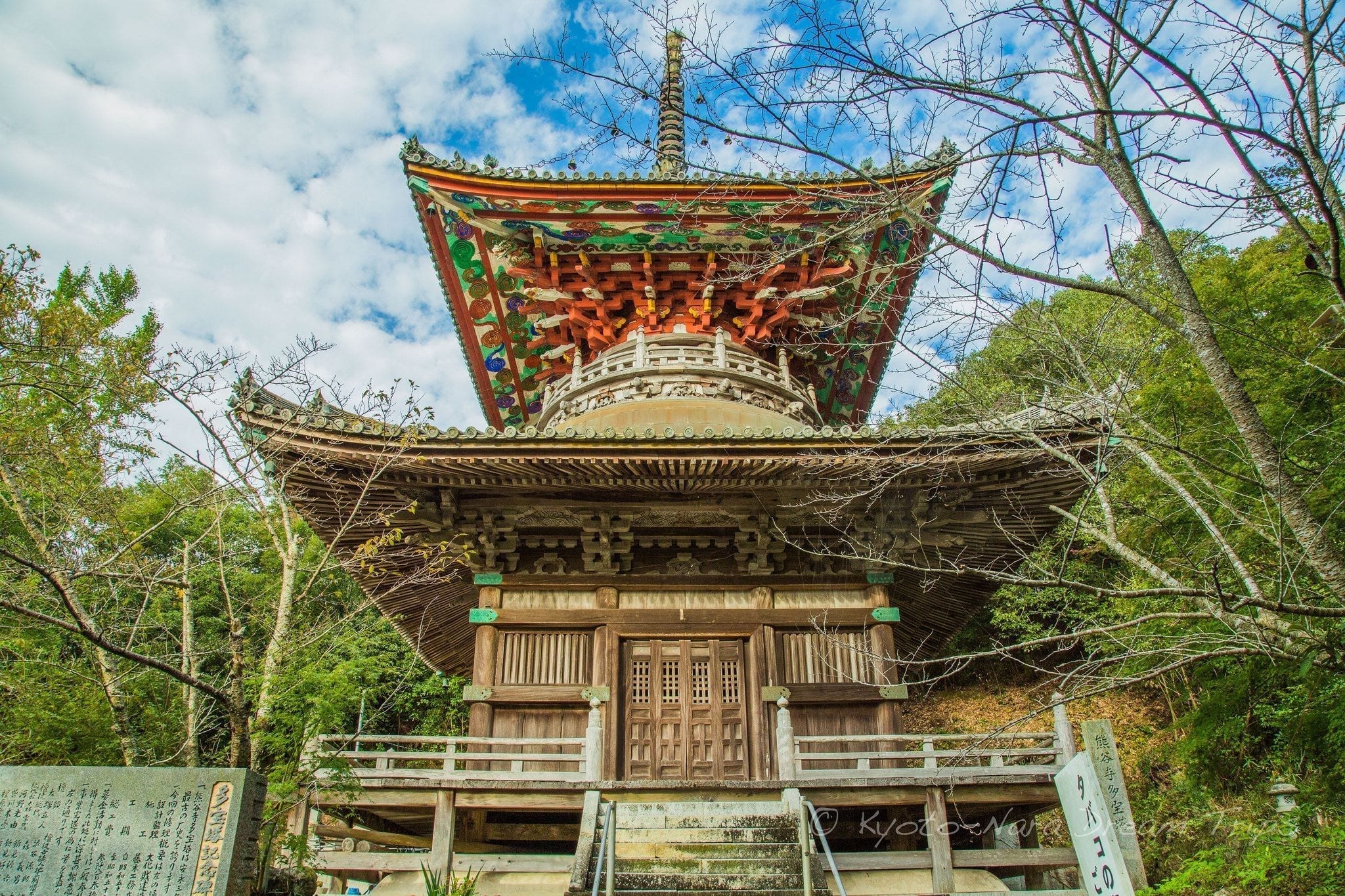
88 Sacred Temple of Shikoku
Japan’s fourth-largest island has attracted pilgrims for 1,200 years to worship at the 88 Sacred Temples of Shikoku, but only recently have foreigners begun to discover this haven thanks to an increasing number of international flights to Takamatsu and Matsuyama. Among the most popular sites are the island of Naoshima in the Inland Sea, Iya Valley, the Naruto whirlpools, Kochi Castle, Hirome markets and Dogo Onsen in Matsuyama. For adventure, climb the holy Shinto mountain of Ishizuchi-san.
Exploring China’s History
Recorded history goes back 10,000 years here as China is one of the world’s oldest continuously civilised countries, making it a prime reason for travel here. China is packed with history with the iconic Great Wall at the forefront. Although decades of rapid development have turned the larger cities in hectic and polluted metropolises, China’s history remains there for the taking, especially for travellers willing to pack their walking shoes and embark on long-distance adventures. Along the way, you’ll experience breathtaking views, quaint village, Beautiful Buddhist statues and ancient temples atop mountains.
When to Visit China
Weather isn’t the only factor when deciding on your China adventure. If you don’t like crowds, don’t travel to China during public holidays such as Chinese New Year in late January or early February and Golden Week during the first days of October. Many landmarks will be extra crowded during this time. Also, smaller shops and restaurants often close for up to a week during these festivals, so you’ll have less of a chance to experience authentic culture.
As China is a massive country with lots of climate variations, it’s difficult to pinpoint the best time for your travel experience, however, March through May and September through early November are generally the best. Summer is also good, but note that southern China has a subtropical climate so that you could encounter high heat and humidity. April through August is the rainy season, so plan accordingly.
Colorful, Aromatic and Flavourful Food
Chinese food has three characteristics: it must have diversified colours, delicious aromas and excellent flavours, making Chinese dishes a work of art. The cuisines of China are as diverse as the country itself. Each region has its own specialty dishes, which can vary wildly. Most travellers are familiar with Cantonese and Sichuan and Hunan foods, but there is much more to Chinese food. In fact, there are eight major Chinese cuisines with the following characteristics:
Guangdong/Cantonese—Fine seafood dishes and lots of rice with generally light and sweet flavours
Sichuan—Spicy and bold, using lots of chili, garlic, ginger and peanuts
Jiangsu—Fresh ingredients, moderately salty and sweet with precise cooking techniques and presentation, favouring seafood and soups
Zhejiang—Mellow and light using freshwater fish and seafood along with bamboo shoots and a variety of cooking methods
Fujian/Min—Mild sweet and sour taste using exotic ingredients from the sea and mountains
Hunan—Even hotter than Sichuan, with liberal use of chili peppers, favouring sautéing, stir-frying, steaming and smoking
Anhui—Hearty mountain peasant food, using many wild plants, herbs and animals, favouring stewing and considerable oil
Shadong—Salt and crispy, using simple ingredients and lots of seafood
Must-See Historical Regions in China
China’s continuous history as a civilisation has resulted in spectacular ancient sites. Considered one of the four great civilisations of the world, China has written records that date back 4,000 years. Amateur historians will find a treasure trove of sites to see.
Ancient and Modern Beijing
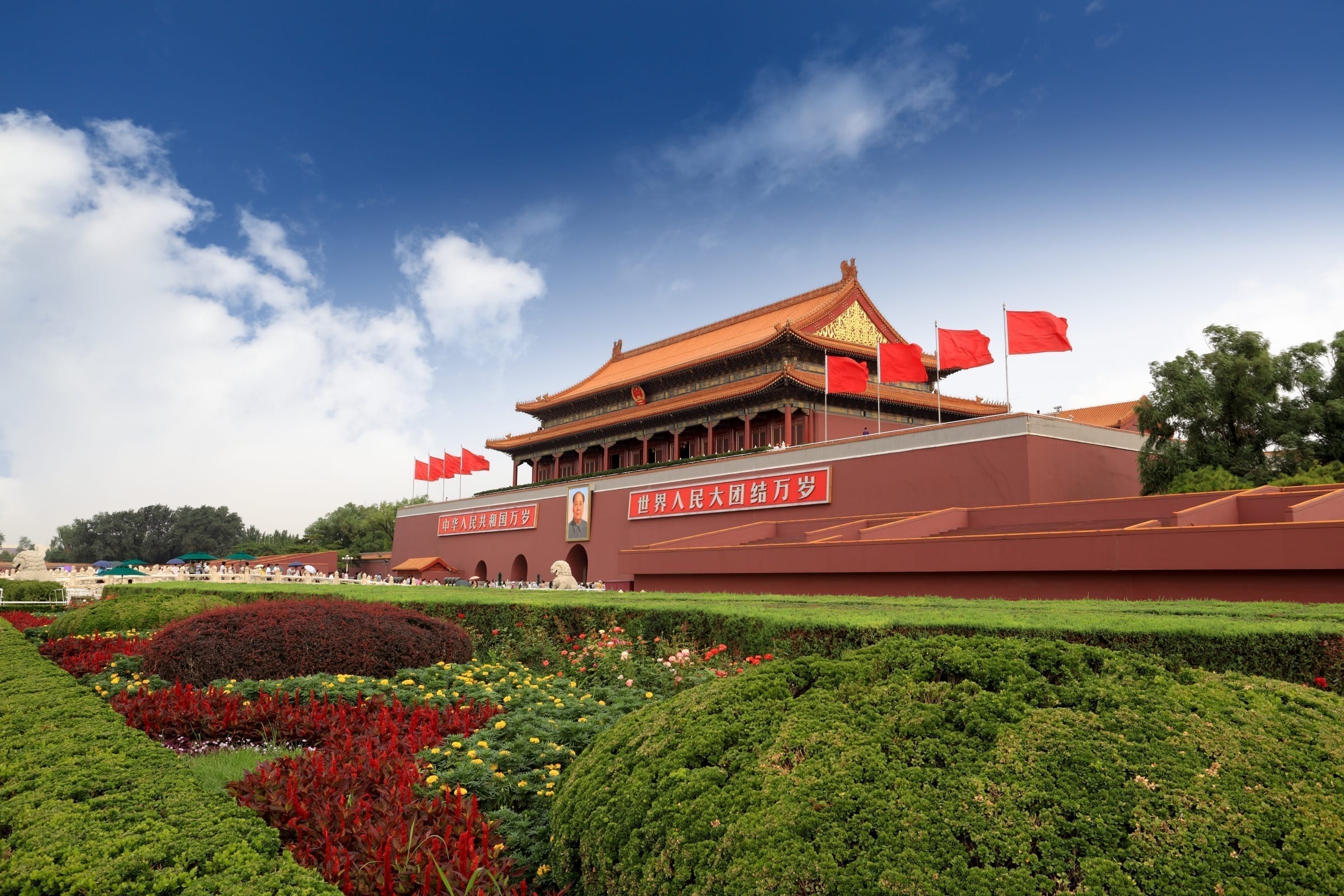
Tiananmen Square – China
Even though the capital city is crowded and polluted, Beijing is an essential place in Asia because of its wealth of UNESCO World Heritage Sites. Ancient and modern history meet in Tiananmen Square, home to the Great Monument to the Peoples Heroes, the National Museum, Mao Zedong’s Mausoleum and the Gate of Heavenly Peace. Visitors enter the Forbidden City, one of the masterpieces of ancient architecture from the square. Some of the most visited sections of the Great Wall of China are also near Beijing.
Key sites that you don’t want to miss, include:
• Jingshan Park
• The Summer Palace
• Lama Temple
The Forbidden City
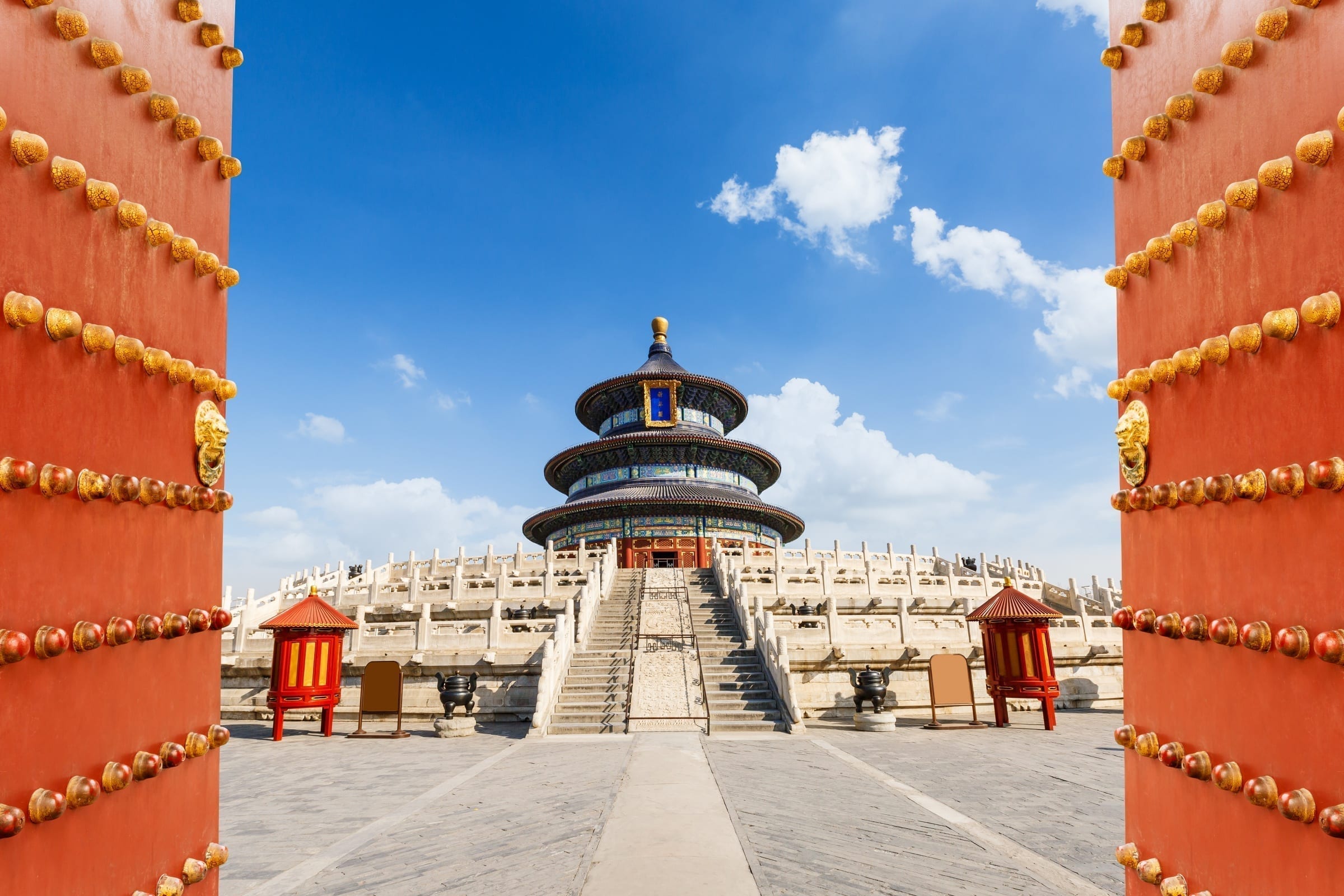
The former imperial palace for the Ming (1368-1644) and Qing (1644-1911) dynasties, the Forbidden City is the world’ s largest ancient palatial structure. Its layout strictly conforms to Chinese fengshui theory. Inside, you’ll find a labyrinth of squares, halls, pavilions, temples and sleeping quarters. Highlights include the Meridian Gate, the Turret and the Antiquarium.
The Great Wall of China
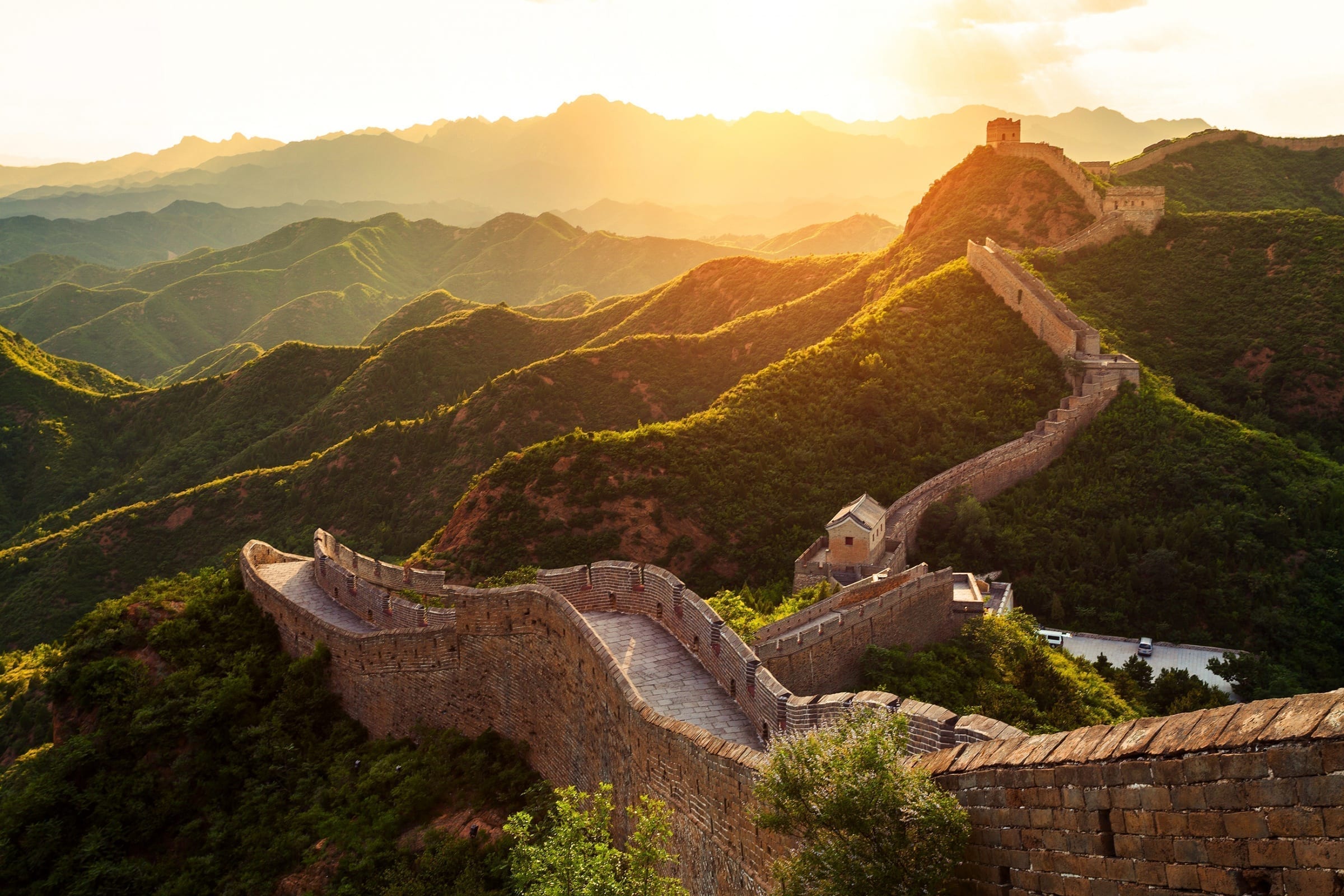
Located about an hour northwest of Beijing, the ancient defensive structure known as the Great Wall was built by different dynasties over more than 2,000 years to protect territorial borders. The Mutianyu section is the best restored section of the wall with 23 original-style watchtowers. Travellers can hike on this section and take in the sights.
Xi’an Treasures
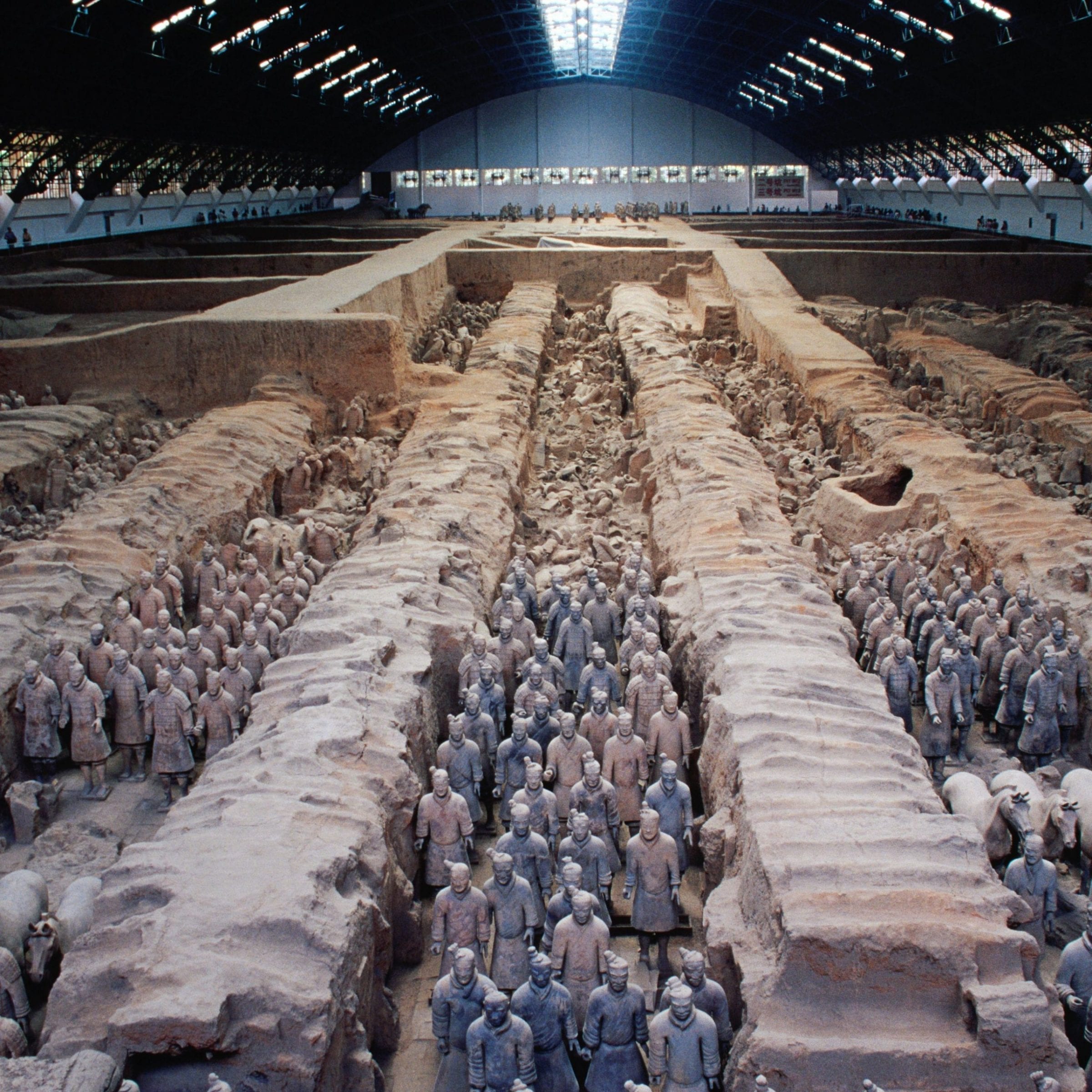
Terracotta Army – The main attraction in Xi’an
The main attraction in Xi’an is the Terracotta Army, composed of more than 8,000 life-size soldiers and horses in battle formation encompassing 22,780 square meters underground. One of the most significant archaeological excavations of the 20th century, the Terracotta Army was constructed as a funerary project for Emperor Qin Shi Huang, the emperor who first unified Imperial China. This must-see site is part of the Mausoleum Site Museum that details the Qin Empire and the emperor’s life.
While in Xi’an, learn about the Silk Road, the historically important trade route between China and the Mediterranean. Travel a portion of the route from Xi’an, its eastern terminus through the Hexi Corridor to Dunhuang to learn about its importance.
Natural Beauty in Guilin and Lijian National Park
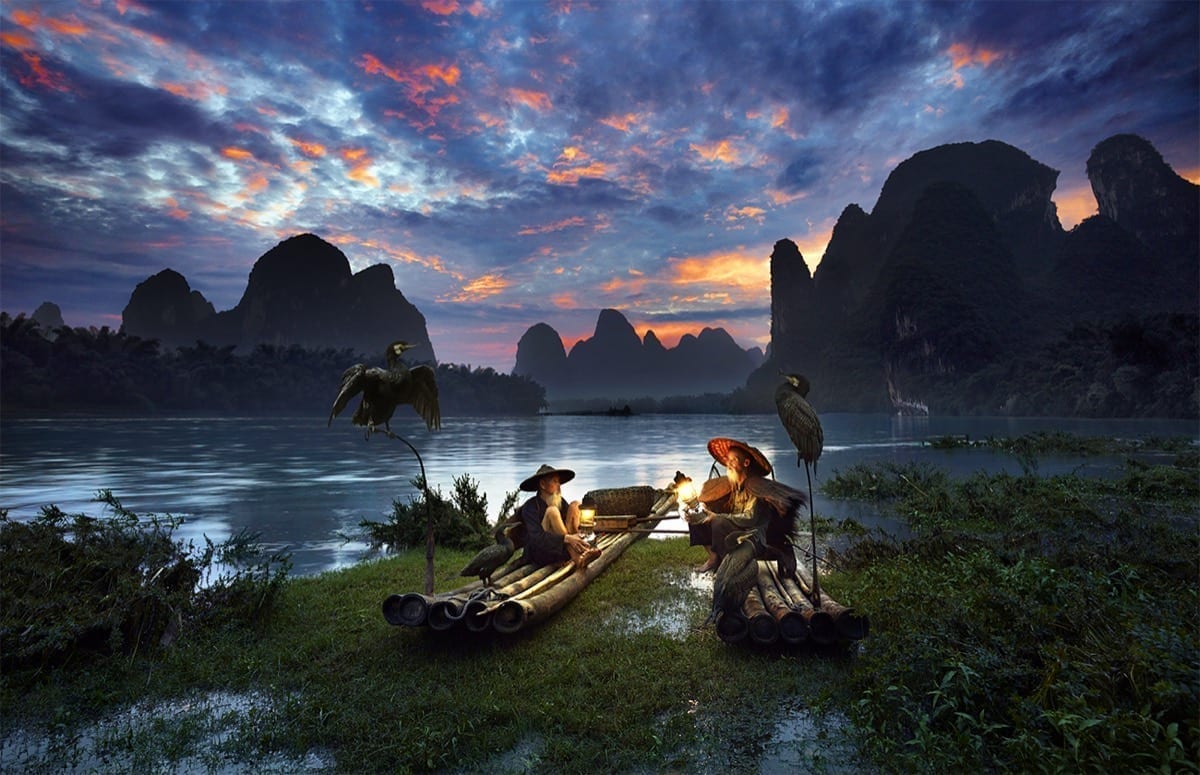
The stunning natural beauty of Lijian National Park
Lijian National Park is one of the most loved places in China because of its stunning natural beauty. It’s located northwest of Hong Kong in the Guangxi Regionl. The Lijiang River runs for approximately 50 miles from Yangshuo to Guilin, passing 200 million-year-old green karst limestone formations. While there, check out the UNESCO Heritage site in Yangshou for cultural activities and scenery, Jiangtouzhou Ancient Town and the Sun and Moon Twin Pagodas.
Great Places in India
India captures the imagination like few other places on earth. This vast country provides many different types of terrains, from the Himalayas in the north, tribal lands in the east, beaches in the south and desert in the west. Travellers come here for many reasons. For some, it’s a chance to find their spirituality through yoga or meditation. For others, it’s a chance to take in the magnificent architecture and the countries culture, or a chance to experience Bollywood and the many different types of curries first hand. Whatever your reason, you’ll have an unforgettable time here.
When to Travel to India
India has three basic seasons: summer, winter and monsoon. The best time of the year to travel is between October and February when the weather is dry and cooler. Temperatures will always be warmer in the south so that you will have comfortable beach weather. March through May is a good time to visit the higher latitudes near Shimla and Darjeeling. Avoid monsoon season, which starts in May on the southwestern coast and works its way eastward. Lowland flooding occurs during this time, making travel difficult in some areas.
Sampling India’s Unique Cuisines
Many Australians have a local Indian takeaway that they absolutely love, but you will truly experience cuisine one you travel there. The food served in the north is wheat-based with lots of bread, while southern cuisines are more rice-based. As a traveller, note that water is served with every meal, but avoid tap water as you can contract illnesses. Always ask for bottled water. Some travellers also have difficulties eating different types of meat, so you may want to stick with vegetarian versions of your favourite curries. Flavouring varies among each region according to the following characteristics:
Bengali—noted for its use of panchphoron, the five essential spices of mustard, fenugreek, cumin, aniseed and black cumin for a perfect blend of sweet and spicy flavour
Gujarati—primarily vegetarian with a high nutritional value
Kashmiri—constantly evolving, this style has now taken on features of cuisines from Central Asia, Persia and Afghanistan
Mughlai—the dominant cuisine consists of dishes prepared for the royal Mughal emperors
Punjabi—an enormous variety of vegetarian and non-vegetarian dishes with spice content from minimal to high
Rajasthani—is primarily vegetarian with a high spice content, includes curries and delicious sweets, with many foods cooked in ghee
South Indian—Known for light, low-calorie dishes with a mix of rice and lentils to prepare dosa, vadas, idiis and uttapams
Best Destinations in India
India is a land of contrasts, all of which you can partake in during one visit if you so wish. From crowded and busy cities, peaceful retreats where you can feed your soul or relaxing vacations on the beach, India has it all.
Remarkable Rasthan: the Crown Jewel of India
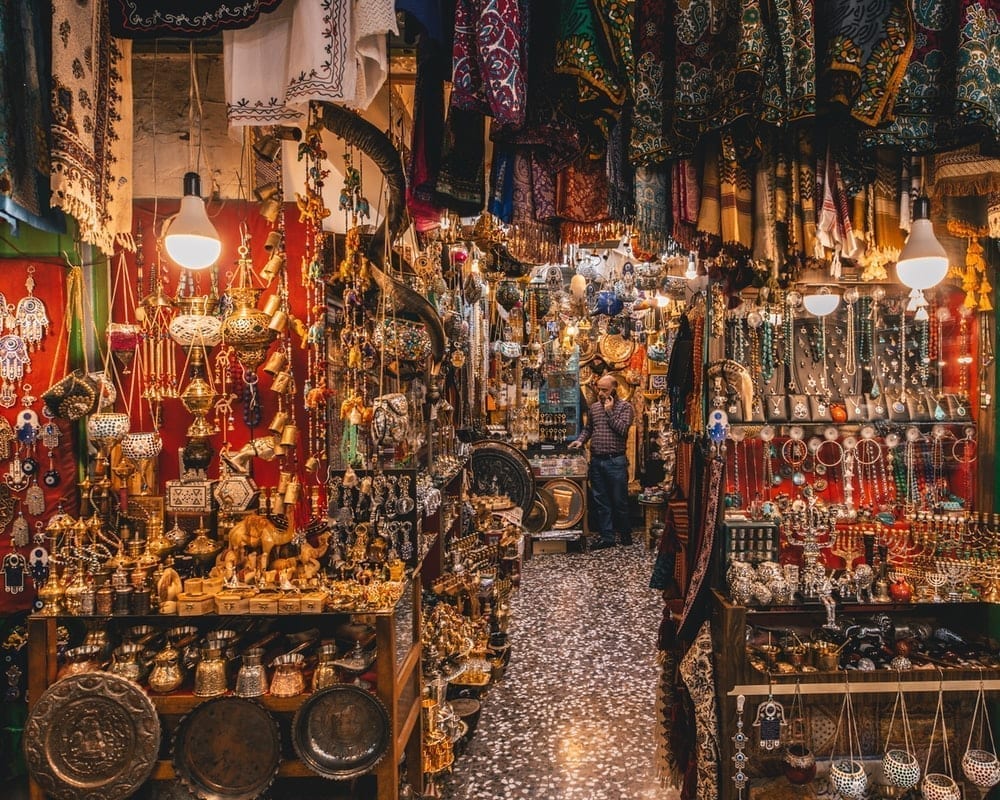
This region is the quintessential land of maharajas, medieval forts, grand palaces and tiger. The Golden Triangle is here, featuring the cities of Old and New Delhi, beautiful Agra and Jaipur, a haven for shoppers with many colourful bazaars. If you only have time for a short holiday, this is the must-see area of the country. Any of the larger cities here provides an ideal base for venturing into the countryside to get a glimpse of rural life.
Delhi
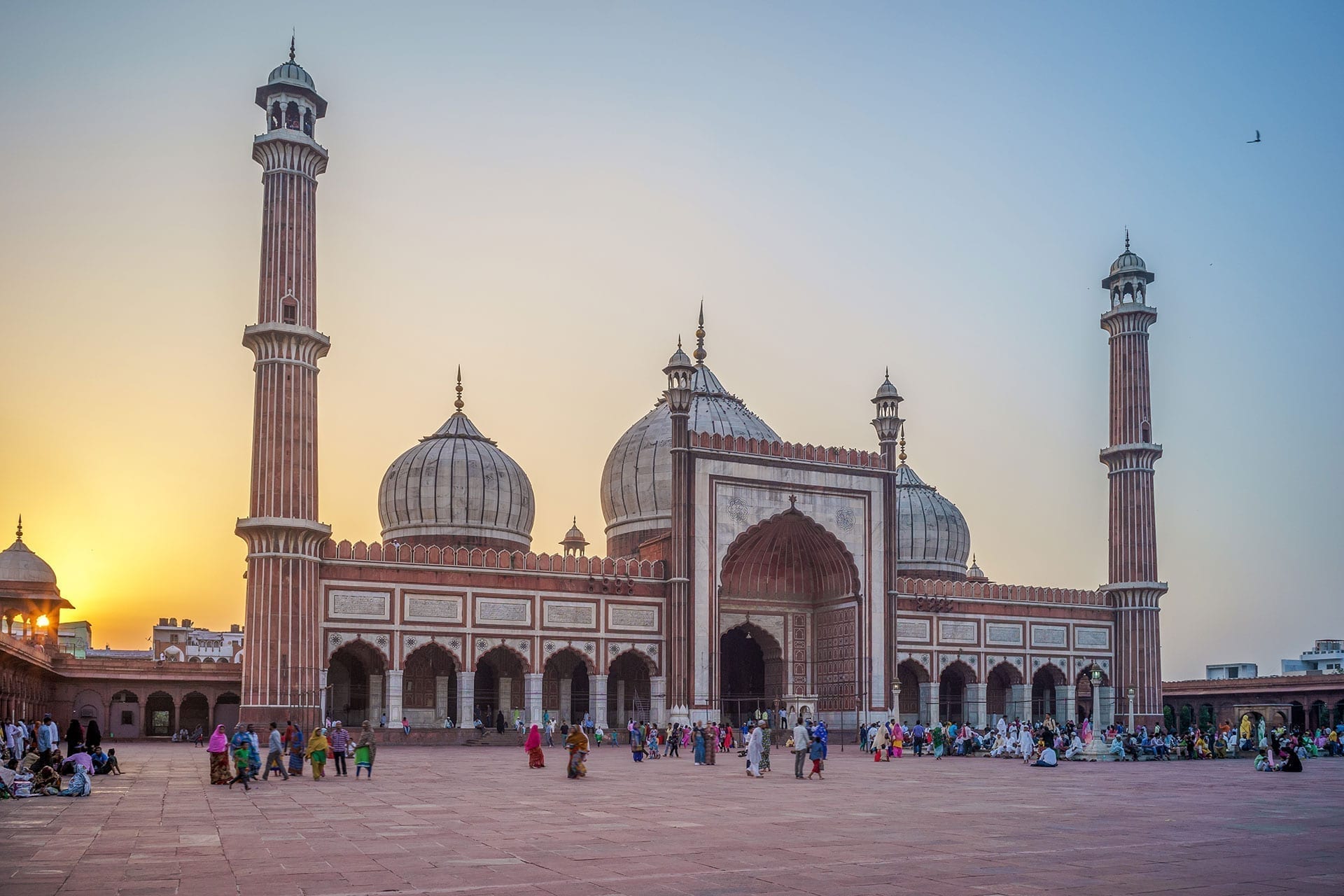
The Jama Masjid Mosque – Gahndi’s memorial
Start your adventure in this megalopolis. In Old Delhi, you can visit Gahndi’s memorial, the Jama Masjid Mosque, Humayan’s Tomb and he Qutub Minar, the tallest tower in India. New Dehli is simultaneously chaotic and calm. Its 17th century Red Fort is a mass of turret and dome. Go to Chandi Chowk for friendly haggling while shopping. Make sure you see India Gate, the monument that honours soldiers from World War I and the Third Afghan War.
Agra

Taj Mahal – the white marble mausoleum of India
No visit to India is complete without seeing the Taj Mahal, the white marble mausoleum built by order of Emperor Shah Jahan to honour his wife in the early 1600s and is the most perfect specimen of Muslim art in India. While here, make sure you visit the Agra fort, one of the best examples of Mughal forts in India as well as the Mehtab Bagh, a 500-year-old Mughal garden designed as an integral part of the Taj Mahal complex riverfront terrace pattern.
Jaipur

Known as the Pink City because of the exterior colour of many of its buildings, that include the Palace of the Winds, the City Palace, and Jantar Mantar observatory and the striking Amber Palace, Jaipur is a paradise for photographers as well as shoppers. Visit the Amber Fort and Palace built by Raja Mansingh, as well as City Palace, Jantar Martar’s Stone Observatory and Hawa Mahal In addition to visit this city’s many markets.
Rishkesh
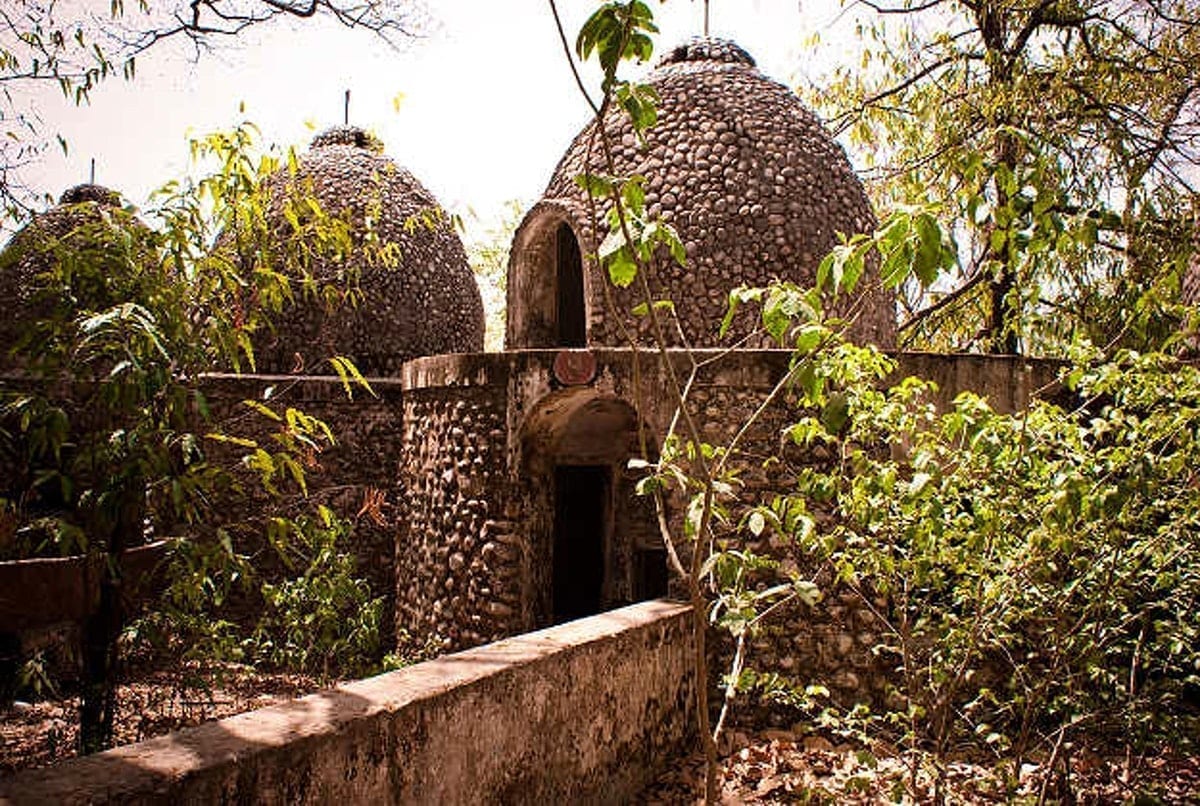
The yoga capital of the world, with its colourful temples and ethereal rivers has captured the imagination of many since the Beatles visited the ashram of Maharishi Mahesh Yogi in the 1960s. If you are looking for spiritual enlightenment, this is the place to go. The main attraction, of course, is the Maharishi Mahesh Yogi Ashram, but also of note is the Swarg Niwas and Shri Trayanbakshwar Temple, Neelkantha Mahadev Temple and the Neer Gah Waterfall. Rishkesh’s setting on the sacred Ganges River is conducive to meditation as in the evening breezes blow down the valley as temple bells ring and holy men and pilgrims prepare for the nightly worship ceremony. Learn to play the sitar, try laughter therapy or simply meditate.
Goa
The high season here is December through May, but if you want to find a bargain, book your holiday at the end of this time as prices are lower on the cusp of the monsoon season. Goa’s sandy coast is perfect for relaxing. Settle into a chair and savour a curry while you sip the drink of your choice. Wander into Old Goa to see the Basilica of Born Jesus, a wonderful example of baroque architecture.
Kochi
Situated on the Lakadeep Sea, Kochi in the state of Kerala has been a popular destination for 600 years. The city has many houses from its Dutch era along with ancient mosques and numerous small islands. You’ll find numerous attractions here, including Fort Cochin, Chinese Fishing Nets, Mattancherry Palace. St Francis Church, Kerela Folklore Theatre and Museum, Santa Cruz Basilica and Hill Palace of Tripunithara.
Bhutan: an Unspoiled, Peaceful Asian Destination
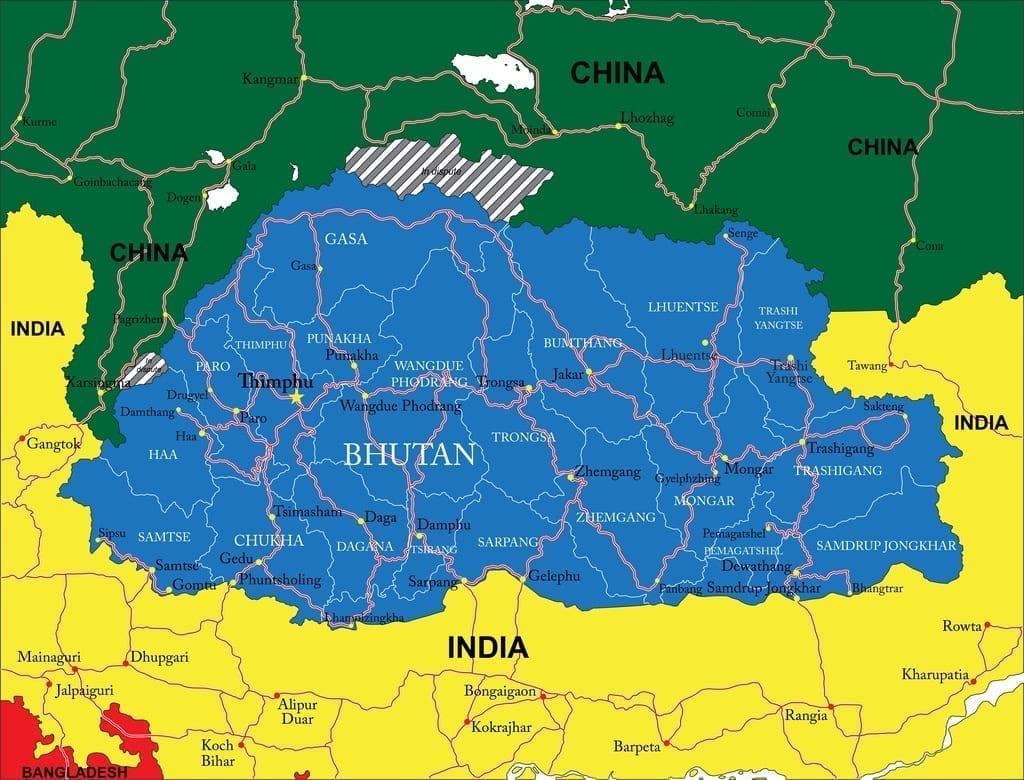
Nestled at the eastern end of the Himalayas between China and India, Bhutan is a stunning mountainous country with clean air and peaceful, dramatic landscapes. Incredible cloud-piercing peaks, snowcapped, rushing rivers, dense forests and deep valleys make this country a joy to explore. This last great Buddhist kingdom of the Himalayas is packed with cultural sites, giving travellers many temples, monasteries and other religious sites to explore. It’s the perfect place to go if you want to learn more about Buddhism. Because Bhutan is small, it’s also ideal for a shorter Asia holidays if you are not keen on city breaks.
When to Visit
Like many other countries in Asia, spring and fall are the best time for an adventure in Bhutan. The country’s climate is influenced by its altitude in the Himalayas as well as the Indian monsoons in June through September. March to May is the best time to visit as the valleys come alive with flowers. Another excellent time to visit is in October and November when skies are clear and the Himalayan peaks are the most visible. It’s also the best time for trekking, although temperatures can be somewhat cool.
Bhutanese Food is Unlike Any Other Cuisine
Food here is relatively spicy with chilis used in almost every dish. Ema datshi, an incredibly tasty mix of chilis and local cheese, is Bhutan’s national dish and is eaten at nearly every meal, doused liberally with butter. Several variations exist, such as kewa datshi, which is similar to scalloped potatoes, shamu datshi, or cheese with mushrooms and shakam ema datshi, , dried and preserved beef cooked with cheese to a stew-like consistency. The most essential ingredient, other than the cheese is the presence of spices, which can ignite your taste buds. Shakam paa, is another beef dish created with chilis and sometimes sliced radishes. Red rice is another staple of Bhutan. It has a medium grain and when cooked turns pale pink with a soft, slightly sticky texture.
If you’re invited into a Bhutanese home, you may experience momos, which are Tibetan-style dumplings filled with pork, beef or cabbage. They look similar to Chinese steamed dumplings. However, the fillings are more elaborate because of the constant use of cheese. Don’t forget to sample sura, a salted milk butter tea. As it is salty, it’s a bit of an acquired taste.
Keep in mind that etiquette is the most important aspect of food and dining in Bhutan as the country has several rules to abide by while eating. When offered food, for example, you are supposed to say meshu meshu while covering your moth, almost as if to refuse the offer. On the second or third offering, you may accept.
Essential Destinations in Bhutan
Bhutan is magical not only because of its scenery but also because it considers itself the Land of Happiness. The country embodies a concept called Gross National Happiness that places people, instead of material wealth, at the centre of its values. While travelling here, you’ll notice that everyone you meet will concern themselves with your peace and happiness as you visit special locations in this tiny country. Make sure that you visit these sites during your exotic adventure here.
Tiger’s Nest Monastery

Perched on a cliff above a forest of pines and rhododendrons, this exceptional monastery is accessible only by a sheer climb on foot or pony. Paro Taktsang, as the monastery is officially known, offers a breathtaking view of the Paro Valley, along with the peace and reverence that this holy place brings. The monastery is where Guru Rinpoche brought Buddhism into Bhutan. A cave network, known as a sacred meditation site, sits alongside the 17th-century temple. The pilgrimage takes two hours but is well worth the challenge.
Punakha Dzong

The Palace of Great Happiness – Bhutan’s most majestic dzong
One of the oldest and largest dzongs in Bhutan, Punakha Dzong, the Palace of Great Happiness, is the country’s most majestic dzong, which is a building that houses both governmental and monastic institutions. Travellers reach Punakha via a three-hour drive east from the capital Thimpu. The dzong sits between two rivers, Pho Chu and Mo Chu. An arched wooden bridge that contains precious relics connects it to the mainland. If you visit during spring, you’ll experience the beauty of flowing jackaranda trees growing around the building.
Hiking to Zuri Dzong

To get the perfect view of the entire Paro Valley, hike to the peak of the Zuri Dzong, the oldest building of its kind in Bhutan. Legend says Buddha came to meditate in the cave here at one time. This peaceful location allows Bhutanese and travellers to soak in the tranquillity that emanates from the extraordinary view.
Gangtey Valley
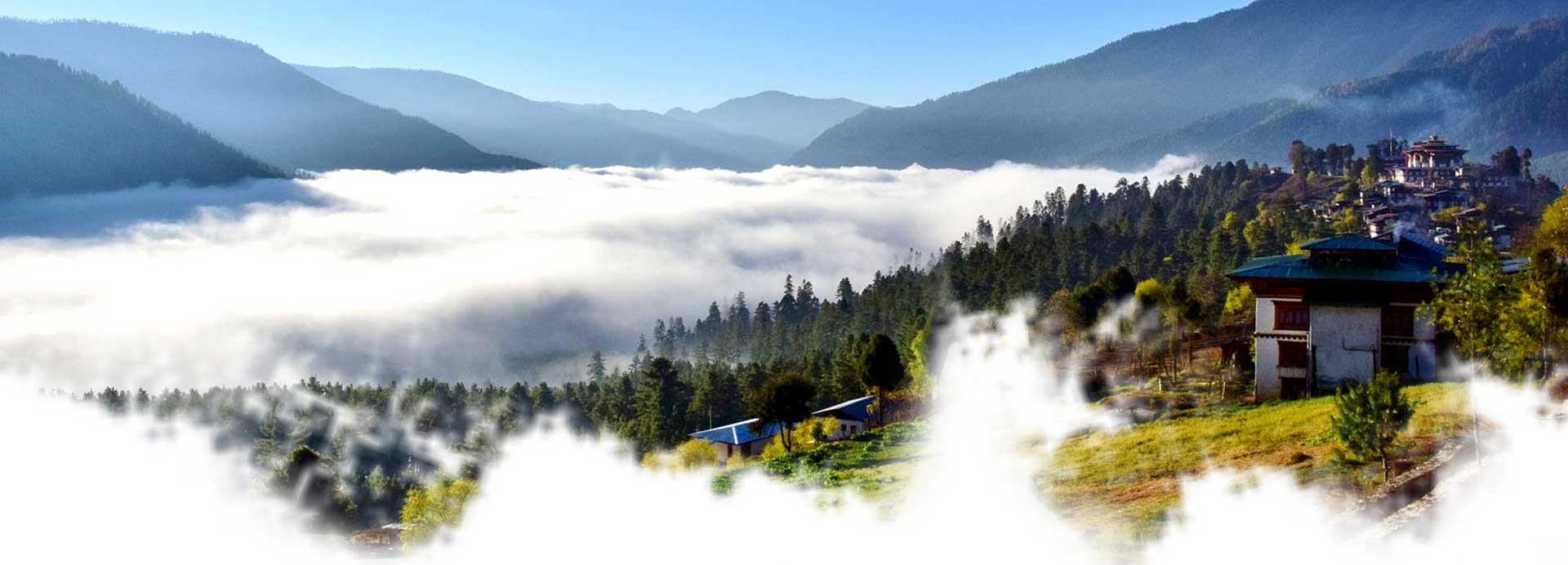
Khotokha Village – a mini Shangri-La
Called the Shangri-La of Bhutan, Gangtey is one of the most stunning valleys in the Himalayas. Here, visitors will find the village of Gogona and Khotokha and pass through meadows and fields, forests of juniper, along with fields of magnolia and rhododendron, which are in full bloom in April. The magnificent forest also has undergrowth of ferns and dwarf bamboo. Also of interest is the historical Gangtey monastery and the Black-Necked Crane Information Centre, which chronicles the lifecycle of these beautiful birds that are native to the valley.
Top Cities in Asia
Numerous cities are top Asia travel destinations and are ideal for visiting for first-time travellers to the continent a well as for those who have limited time to spend on a vacation. Consider these destinations that will give you a taste of local culture along with all the conveniences of modern life. Big cities are also among the bet place for a family holiday.
Experience Modern Urban Adventure in Singapore

Marina Bay Sands farview night, Singapore
The ultra-modern city-state of Singapore is a melting pot of Malay, Chinese and Indian cultures, all of which come together in the country’s architecture, traditions and food. Singapore is a year-round destination, but if you want the best weather, go from February to April. These months are Singapore’s dry season, so you’ll experience less rainfall during your holiday.
Wonderful Food for All Budgets
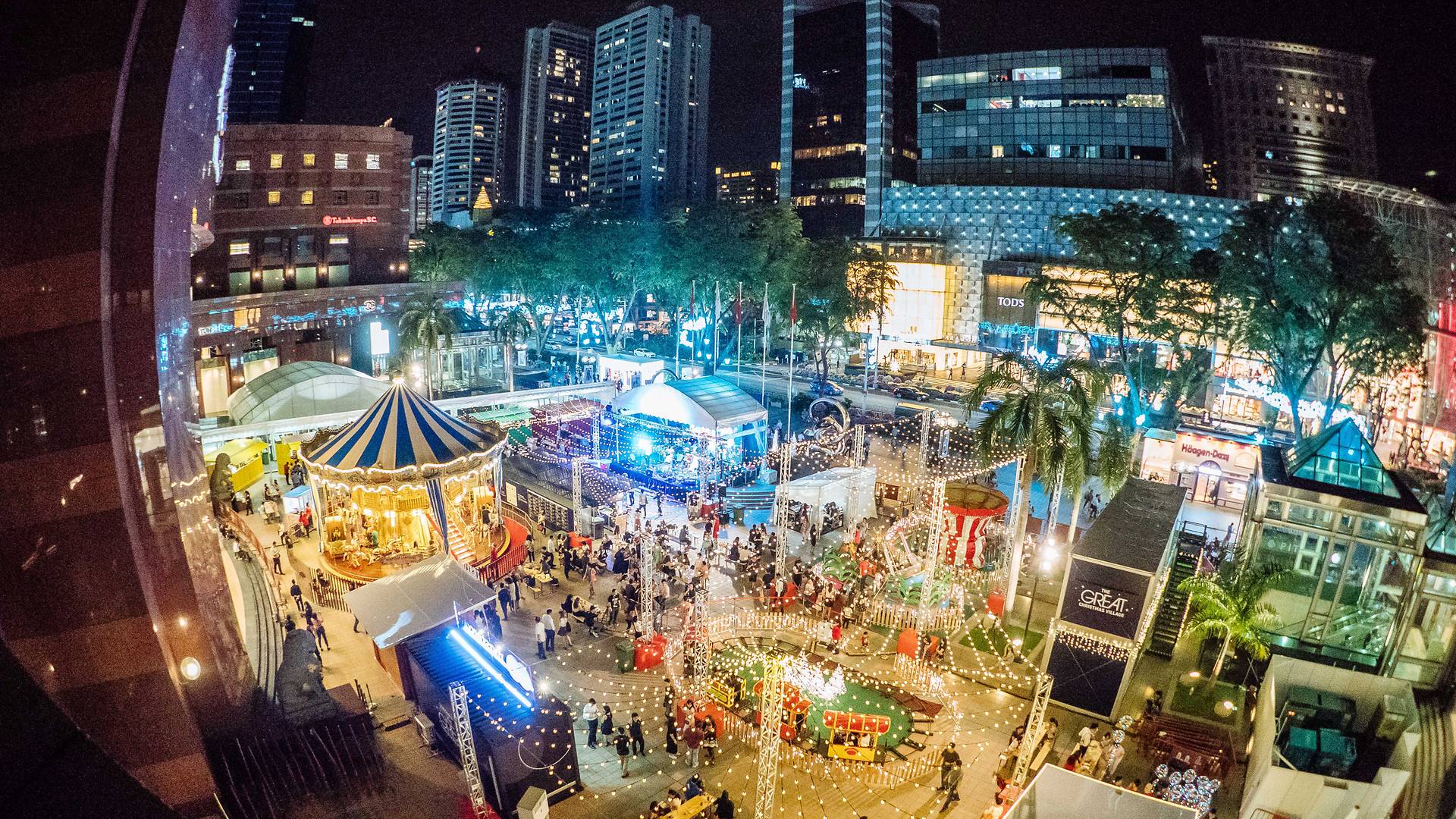
Whether you want a gourmet meal, are happy with street food or want something in between, Singapore has it all. The city is famous for its hawker centres where you can get a great meal for a bargain price. Among the dishes travellers should try while on holiday include Laksa, perhaps the ultimate blend of Malay and Chinese food, bak kut the, which is essentially boiled pork ribs eaten with rice and hokkien mee, a mixture of egg and rice noodles fried in a wok with an egg and bean sprouts and often pieces of squid and shrimp.
Wander the Cityscape
Singapore’s cityscape almost looks like it came from a science fiction movie. Modern high rises rub elbows with traditional neighbourhoods such as Little India and Chinatown, stunning architectural gems and luxury shopping malls. One moment, you’re sampling street food and the next moment, you’re inside an electronics heaven viewing all the latest gadgets.
Along with a variety of ethnic quarters to discover, Singapore has lots of family-friendly attractions and gorgeous public spaces that make visiting this futuristic city worthwhile. It also has an excellent public transportation system that makes getting around easy.
While in Singapore, try to visit some of these top sites:
• Jurong Bird Park
• Sentosa Island with an interesting museum, an aquarium, shopping and beaches
• Botanic Gardens and Gardens by the Bay
• Sands SkyPark observation deck
• Singapore Zoo
• Orchard Road for shopping
• Singapore Flyer Ferris Wheel
• Clarke Quay
Cosmopolitan Holiday in Shanghai

China’s largest city is also its most cosmopolitan, offering travellers a chance to simultaneously experience the past, present and future. The Huangpu River divides this top destination in Asia travel into the Pudong and Puxi districts. Pudong is new, developed in the 1990s with a skyline that looks like it came out of a science fiction movie. It’s the symbol of China’s modernization and includes bike trails, lakes, minigolf courses and the Shanghai Disney Resort, making it a great destination for families.
The Puxi is Shanghai’s historical centre where you’ll find culture along with historical houses and buildings and the city’s famous art deco architecture. Walk along the Bund the riverbank boulevard on this side of the Huangpu to find the essence of Old Shanghai where you’ll witness people practicing tai chi and qi gong at all hours of the day.
Travel to Shanghai in October or November for the best temperatures and driest conditions. Spring also offers a good window. Because Shanghai is a business-centric city, you’ll often find great hotel deals on the weekend, making this the perfect destination for a weekend getaway.
Shanghai Cuisine
The city’s cuisine is called Hu or Bengang cuisine, a subset of Jiangsu cuisine. Colour, aroma and taste are its elements, emphasizing the use of seasonings, the quality of ingredients and original flavours. Influenced by its location at the mouth of the Huangopu River on the Yellow Sea, Shanghai boasts dishes that are unique to the city but also influenced by the surrounding areas.
The natives here have a decided sweet tooth, with more sugar used here than in other parts of China. You’ll also find a fondness for smoked fish slices usually made from white carp, as well as seafood, particularly steamed crabs. The most famous food is Xiaolongbao or soup dumplings with a delicate skin filled with pork, vegetables, shrimp or crab and placed in a delicious broth. Other local favourites include beggar’s chicken, Peking duck, braised pork and fried pork buns. Shanghai snacks are in a category by themselves and include hundreds of different dumplings and pastries, rice balls, noodles with toppings, fried cakes with green onions and much more. Eating in one of the many diverse small establishments is where you will find the real Shanghai as the immense crowds and traffic can sometimes become overwhelming.
Must-See Attractions in Shanghai

Obviously, the modern and traditional quarters of Shanghai have decidedly different attractions. When in Pudong, visitors can take in the nightlife in Lujiazui along with sites such as the Oriental Pearl Tower, World Financial Center, Expo Park and Century Park.
For a more traditional experience, head to Longhua Temple, the city’s largest and most active temple with five halls and two towers and a large eight-sided pagoda. Its five-ton, two-metre high copper bell is struck each New Year’s Eve. Find your inner self at the Jade Buddha Temple, so named because of the two jade Buddhas sent to Shanghai from Myanmar for the temple’s founding in 1882. Head to the Tianzifang district, a maze of alleyways packed with restaurants, cafes, galleries and shops where you can get a glimpse of local life. Another area is The Old City, with the remnants of the Old City Wall. Here you can see laundry flapping on bamboo poles and see old shikumenstone gatehouses.
Siem Riep, Cambodia—More than Just Angkor Wat
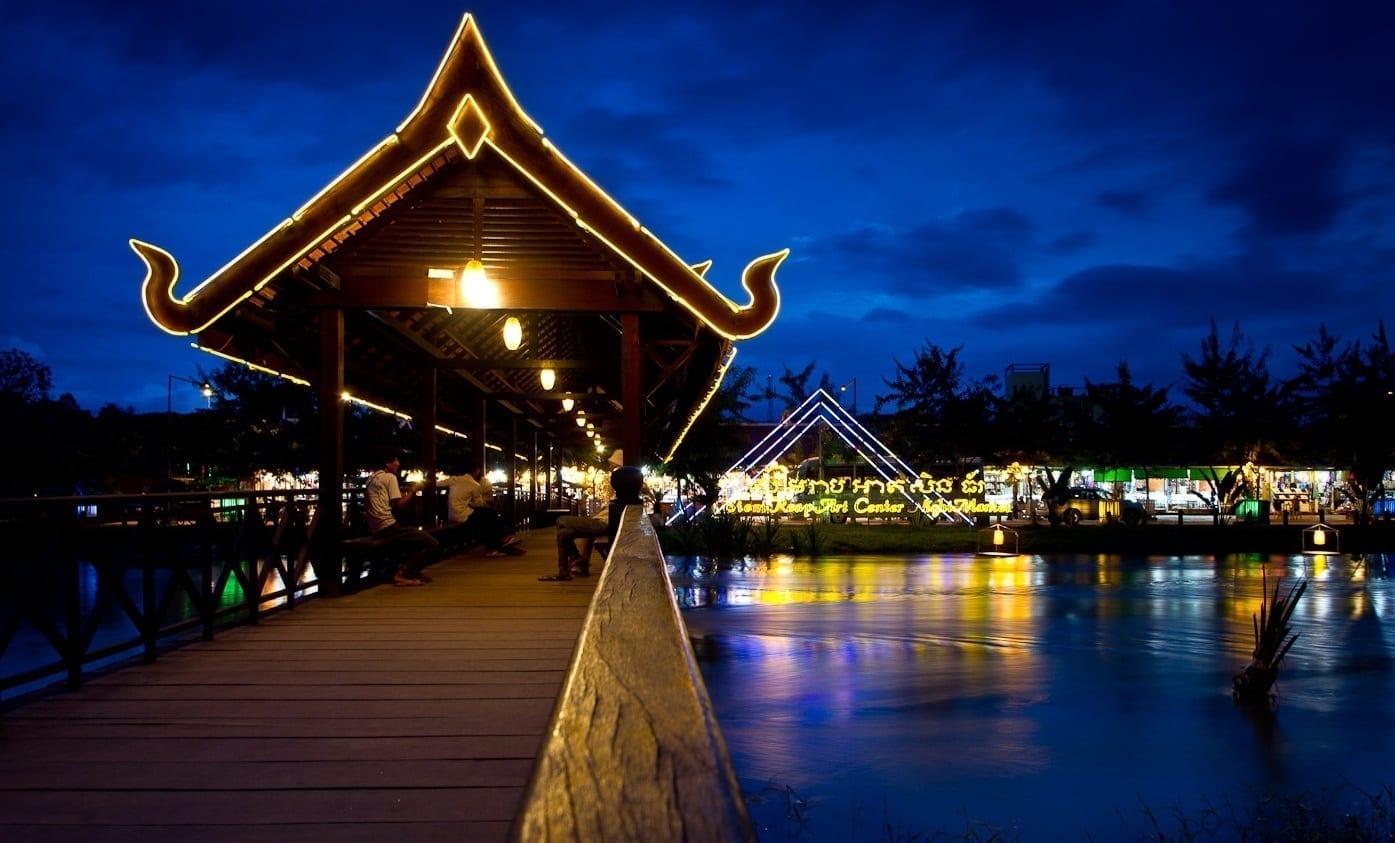
Most travellers come to Siem Riep for its main attraction, the peaceful temple complex of Angkor Wat, yet you’ll also find plenty to see and do in this country of extraordinary Buddhist temples. Siem Riep has styled itself as Cambodia’s chic centre. While the city is considerably smaller than many other megalopolises in Asia, this destination is one to savour. Once you have explored the ancient temple complex site to your satisfaction, you’ll have more to explore here with world-class food and drink, great shopping and a creative cultural scene.
Choosing a time to visit Siem Riep can be difficult. Following Southeast Asia’s typical weather patterns, the best time to visit Angkor Wat is from late November to early April during the dry season, however, during part of this time, the temple complex is choked with crowds as 2.6 million people visit annually. If you don’t like crowds, plan your trip for the shoulder months of November or March when the weather is pleasant, yet crowds aren’t as intense. Avoid late April and May, which have stifling heat and humidity. December and January bring the best weather, but hordes of tourists come with it, meaning you won’t be able to take good photos.
The Allure of Angkor Wat

Angkor at sunset – Siem Reap Cambodia
The temple complex in this UNESCO Heritage Site is vast and to explore it properly, you need either a three-day or a seven-day pass to enjoy the 208-hectare site fully. Located six kilometres north of Siem Riep, Angkor Wat may only be accessed from its western gate. Built in the first half of the 12 century by King Suryavarman II, the main temple is dedicated to the Hindu god Vishnu and is the king’s funerary temple. At the time, Angkor Wat was the capital of the Khmer Empire; however, when the capital moved to Phnom Phen, Buddhist monks took over administration of the temple. In addition to the main temple, other essential buildings in the complex include:
• The Bayon, with 54 towers and 216 faces of Avalokiteshvara
• Ta Prohm, still covered by the jungle in the state in which it was discovered
• Banteay Srei, Citadel of the Women
• Ta Som, same style and structure as Ta Prohm but larger
Siem Riep Culture
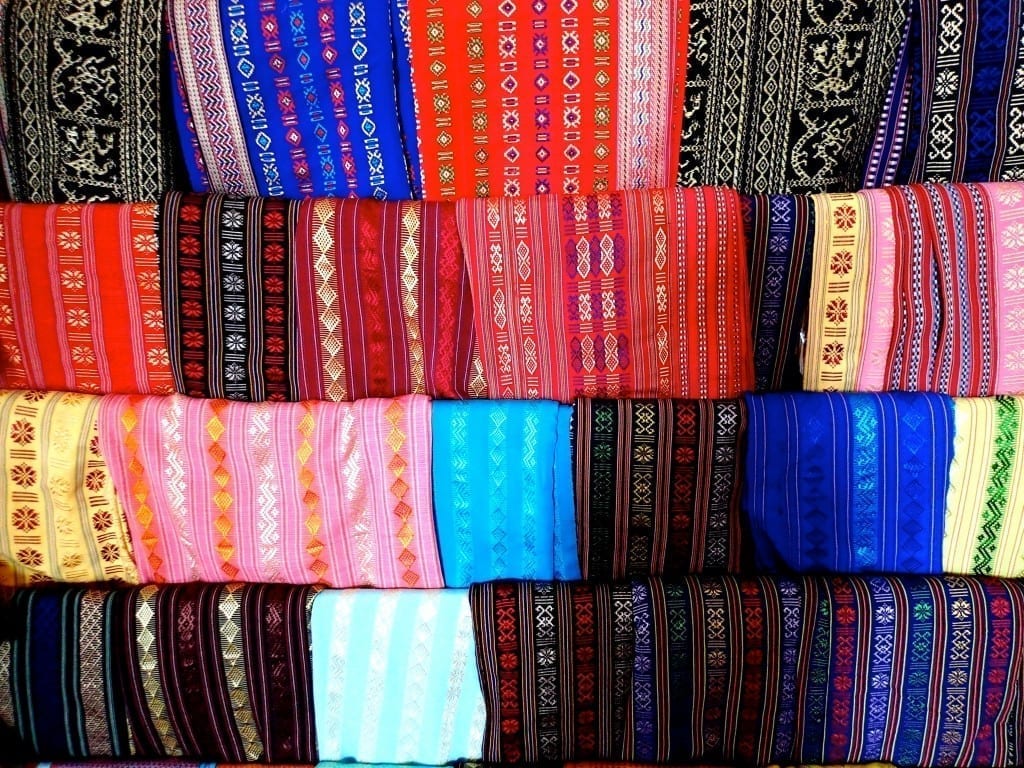
Whether it involves food or learning about Cambodia itself, Siem Riep delivers the good. After your Angkor Wat explorations during the day, take an evening food tour that takes in street stalls as well as Cambodian barbecue venues. Learn about Cambodian culture and the Khmer Empire at the Angkor National Museum. The Angkor Silk Farm has information and exhibits on all phases of the silk-making process while the MGC Traditional Textiles Museum showcases traditional handiwork. Siem Riep is also a great base for venturing out into the surrounding countryside. You’ll even find vibrant nightlife here, making Siem Riep a full-experience destination.
Top Asia Destinations for Relaxation
With thousands upon thousands of miles of coastline as well as thousands of islands, many of which are in tropical climates, Asia also has numerous destinations that are ideal for ultimate relaxation. Every country in South Asia and Southeast Asia has a place where you can get away from it all and reconnect with your partner and family. Here are two of the best.
Bali: A Top Destination in Asia Travel

This island that is part of Indonesia by far, the favourite destination of Australians.
Not only is it beautiful, but it is also an economical place to visit as you’ll generally find lots of bargain flights to this island paradise. The Bali Statistics Center notes that 30% of the island’s 5.6 million overseas visitors are from Australia. It’s also considered by many Australian parents as a great place to introduce their children to a different culture.
Enjoy Nyung Nyung Beach, framed by jungled cliffs and azure ocean. Experience spirituality in the dramatic cliffs in Uluwatu, relax in the tranquil waves in Nusa Dua or visit the dramatic rice paddies in Ubud. You’ll also find cultural sites here, such as the Ulun Danu Temple.
The food here is inexpensive and is known for its unique taste that is rich in spices. Despite its uber popularity, Bali still has numerous remote and unusual places where you can get away from it all, making it an ideal romantic vacation spot. Whether you seek tranquillity, scenery or surfing and diving, Bali can deliver it.
Kuta
This beach and resort area in the island’s south is one of its first tourism developments. It’s known for its party-centric atmosphere at night and surfing in the Indian Ocean during the day. The area’s long, consistent waves make it a great surf locale for beginners.
Seminyak
The island’s most sophisticated and upscale resort area, Seminyak feature beautiful beaches and a chill vibe. You’ll find lots of family attractions to enjoy as well as boutique shopping and fine dining. Despite all the glitz and glamour, if you are serious about the culture here, you can also find locals offering fine-dining restaurants, which are the perfect addendum to a day on the beach. Visit the Petitenget Temple if you want something traditional to do. This town is also a great place to hang out with kids, as its ambience makes it a great place for hanging out with friends and family for kite flying, swimming or sunbathing.
Travel to the Paradise that is the Maldives
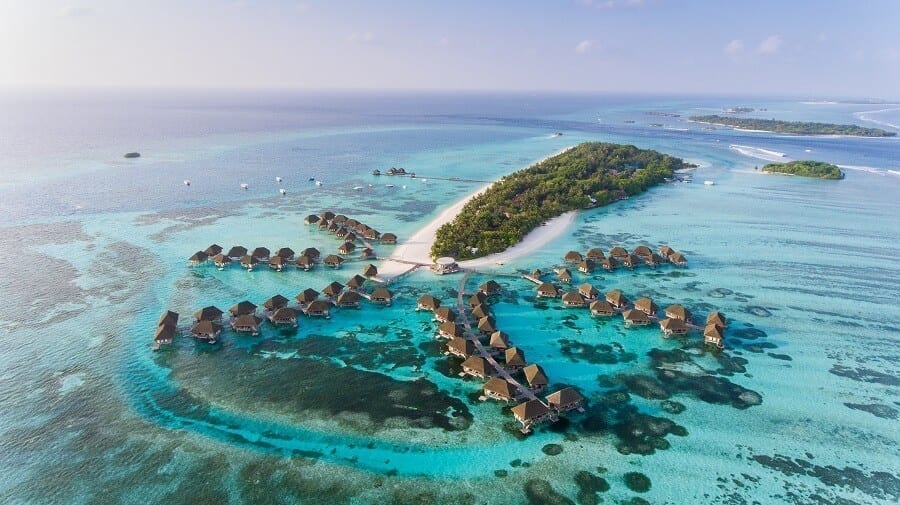
A Breathtaking Aerial View of Islands in the Maldives
Beaches, blue lagoons and coral reefs: this is the paradise known as the Maldives, one of the bet destinations in Asia Fill your days with swimming in turquoise water, sunning on pristine white sand and indulging in some of the finest seafood on earth. You owe it to yourself to visit this unique nation with an average elevation of only seven feet above sea level.
The Maldives is a sovereign nation located in the Indian Ocean off the southern tip of the Indian subcontinent, west of Sri Lanka and south of the Lakshwadeep Islands. Composed of approximately 1,190 islands and sandbanks that sit atop a vast underwater mountain range, the archipelago is grouped in a double chain of 26 major atolls spread out in a north-south direction covering an area of 90,000 square kilometres. An extensive reef structure protects the islands, providing a home to some of the most exclusive and spectacular underwater species on the planet. The Maldives has no counterpart when it comes to its unique geography and topography. In fact, the Maldivian language contributed the word “atoll” to English, derived from “athlohu.”
Malè is the country’s capital city and comprises the entire island of the same name. At only 1 kilometre wide and 1.7 kilometres long, it is one of the most densely populated urban areas in the world, supporting more than 92,000 residents. Other major islands include:
• Fuvamulah, considered the most beautiful island of Mali with gorgeous beaches, marshes, wetlands and forests
• Villingili, an exclusive resort island on the Seenu Atoll with more than 100 private villas
• Alimantha, an outstanding diving and snorkelling spot
• Kudahuvadho, with ruins of Buddhist temples
Rich Culture and Amazing Food
The customs and social behaviour of the Maldives are greatly influenced by Sri Lanka, Arabia and North Africa. On the smaller islands, you’ll find a rich and vibrant culture that is largely unchanged. Maldivians have a treasure trove of ancient mythology and folklore passed down orally through the generations, with myths covering various aspects of island life. Most folktales depict fearful sea demons and spirits that haunt the islanders.
The cuisine offers a wide range of tastes ranging from mild to very hot. Fresh, local ingredients, especially seafood, are an integral part of the offerings. You’ll also find unique places to eat dinner that include underwater restaurant where you can gaze at the surrounding aquatic life while consuming your food.
World-Class Diving and Snorkeling

The Maldives are known for spectacular diving and snorkelling locations, many of which are appropriate for children and other beginnings. The most popular diving spots are Fish Head, HP Reef, Banana Reef and Maanta Point. The best ways to reach these locations are via charter tours. Renting a yacht is also common, allowing you to explore hidden gems in this island nation at your leisure.
Booking Top Asia Holidays with AVG
No matter where you want to travel in Asia, AVG can help get you there. We have the keys to all of the top city, country and leisure asia destinations to provide you with an outstanding holiday whether you are a first-time traveller or a seasoned visitor to this region. Contact us today to get started on booking the holiday of your dreams.
Websites for additional information:
Vietnam-guide.com
Japan-guide.com
Chinahighlights.com
tourism.gov.bt
nomadicmatt.com/travel-guides/cambodia-travel-tips/angkor-wat
visitmaldives.com


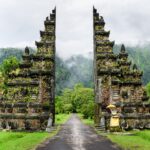
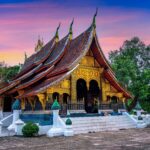
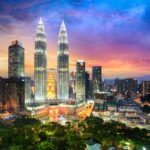

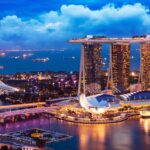


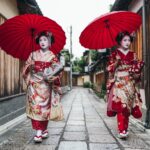
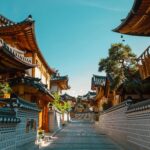
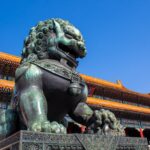

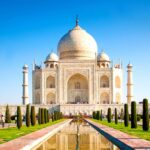

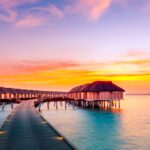

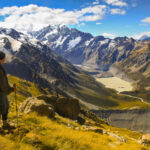
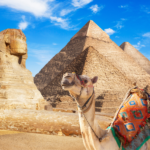
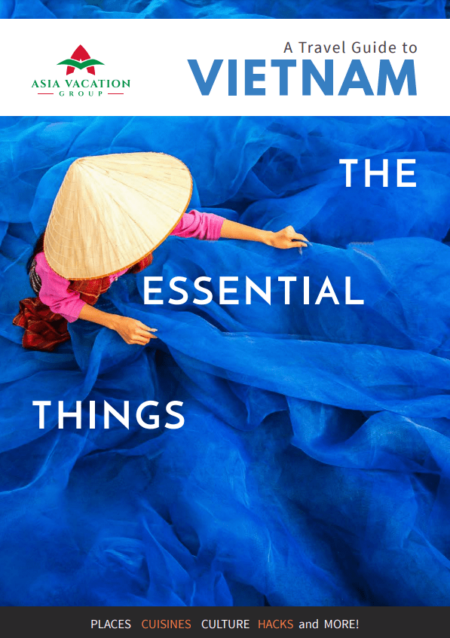
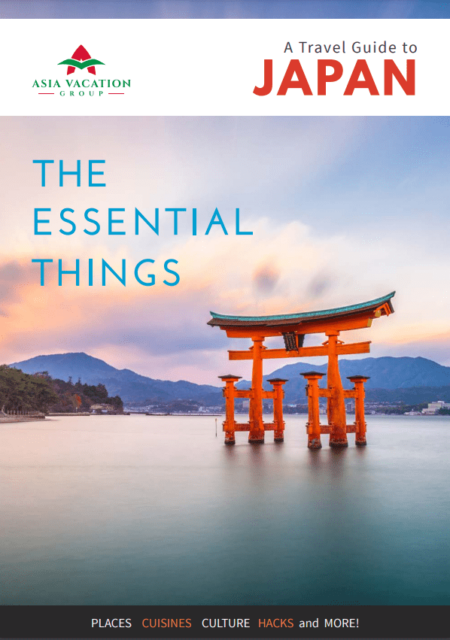
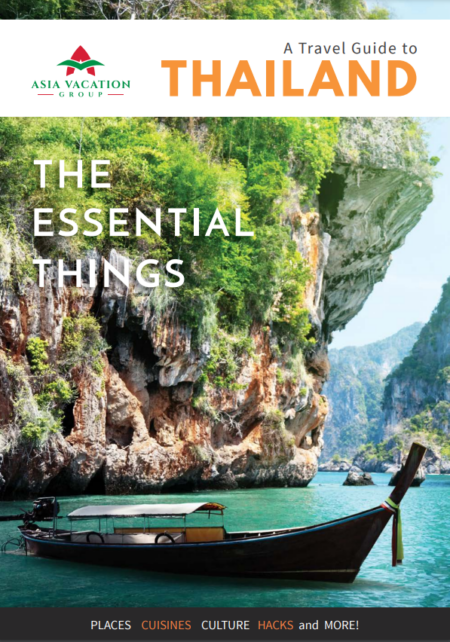




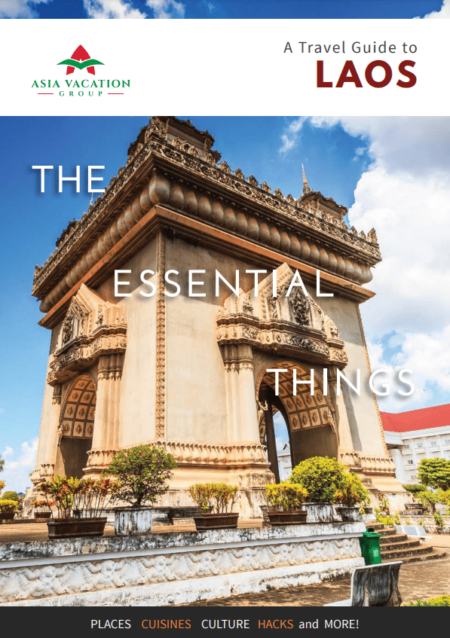
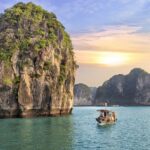
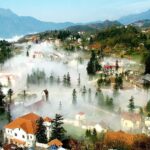





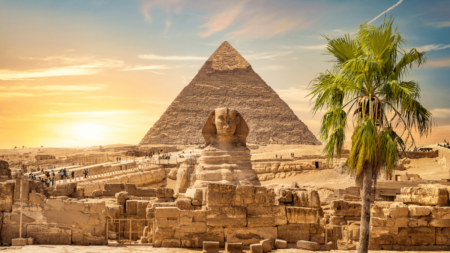
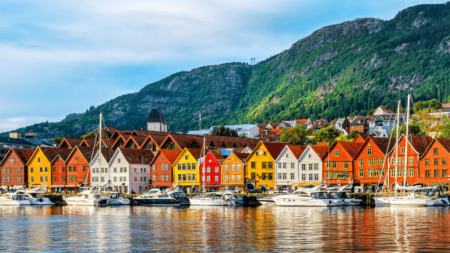




 planning
planning